
With one small gesture, designer/artist/salon-owner/school-master Fritz Haeg made a great disruption to the "toxic uniformity" of suburbia. By convincing a suburban family in Salina, Kansas to tear up their manicured lawn and replace it with an edible garden, Fritz transformed a standard and consumptive lawn into something idiosyncratic and productive. Edible Estates questions assumptions of beauty in the American lawn, as well as the responsibility of private-space, standards which really haven't really shifted since their first inception in the 1950's suburban developments of Lakewood and Levittown . Edible Estates is one of a host of projects under gardenLAb , Fritz's answer to "the self-reflexive culture of art and design, where formal novelty, hermetic discourse and the latest software dominate." GardenLAb intiates projects that test and reflect on our relationships, communities and environments, provoking discussion, exchange and new forms of expression. Fritz found a home for these communities and intiatives when he moved into his geodesic home on a Los Angeles hill. In this imaginative space, he opened the Sundown Schoolhouse , devoted to "gently radical design" across a range of disciplines.
We invited our friend, Amy Seek, to talk with Fritz Haeg about Edible Estates and other gardenLAb projects. While in school, Amy received a grant to work with the Urban Nutrition Initiative in Philadelphia to create sustainable landscape maintenance policies and edible landscape areas on the University of Pennsylvania campus. She's now a practicing landscape designer doing large-scale public work, while continuing the search for food security through landscape architecture.
Do you have a theory of small scale revolution?
I'm not interested in big monuments. I'm interested in singular gestures that become models --- small gestures in response to common issues that can be instituted by anyone in the world. And in that way, my projects on the surface seem quite modest and benevolent until you think of the implications if they were replicated. That potential has become most clear to me with Edible Estates. You can't imagine anything less threatening than a small vegetable garden in front of someone's house. It's the most modest, basic, primitive human gesture: planting your own food. I like the idea of creating the edible landscape in the front lawn and then saying, "What? What's the big deal?" To be totally unprepared for any kind of controversy. "What do you mean? We're just making our own food!" As people start to analyze why the garden's unsettling to them, they start to understand the absurdity of any argument against it.
Edible estates is the perfect example of a project that has no monumental intentions: it's very small and modest; the opposite of what most architects strive for in their practice. Architects want permanent monuments that will be testaments to their genius and will survive them. It's unfortunate that a lot of really brilliant architects with the capacity for change are perpetuating this idea of the mega-project, the monument, which we saw from the 60s had such disastrous consequences. Jane Jacobs did such a good job 40 years ago of articulating the problem with the mega-urban project.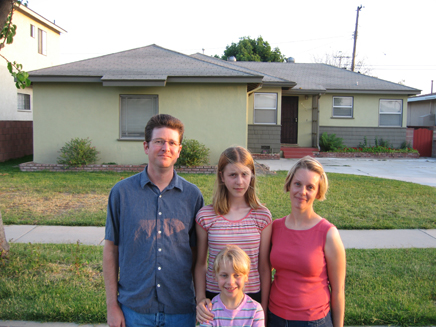
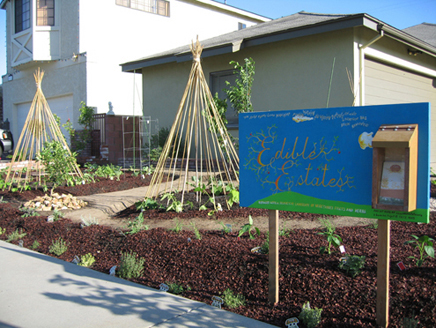

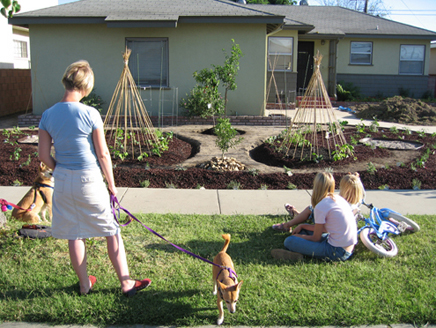

How did you begin thinking of the garden as a good place for these kinds of experiments, especially since you are an architectural designer -- ?
I've had this interest for a long time. The garden is the perfect example of how we as humans can learn to occupy the planet in a more thoughtful way. The garden is what humans make to feed ourselves; it's like some reconciliation between what humans need to survive and what the planet needs to sustain that. Where we grow food, it's scary, industrial, there's chemicals and machinery - it's problematic. But when you eat out of your garden, you don't dump things in it that you don't want to eat. It's very direct: you understand the connection. And the more disconnected we become from the garden, the more reckless we become with the way we occupy the planet.
The older I've gotten and the more broad my work has gotten, the less interest, the less particularly focused I am on buildings. I'm more interested in how an architect trained in buildings can take that sort of expertise and that global way of bringing things together and creating spaces, organizing principles and working with different disciplines, to things other than buildings. I like the idea that all these projects happen under the rubric of an architectural practice.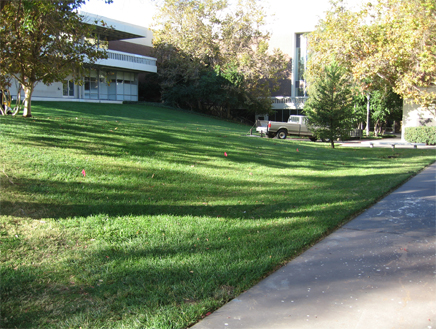
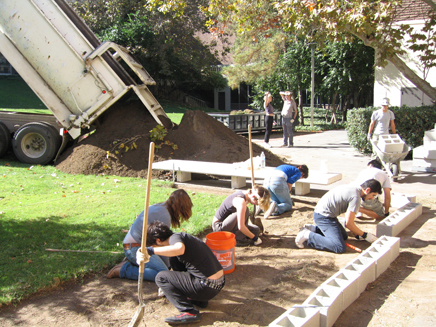
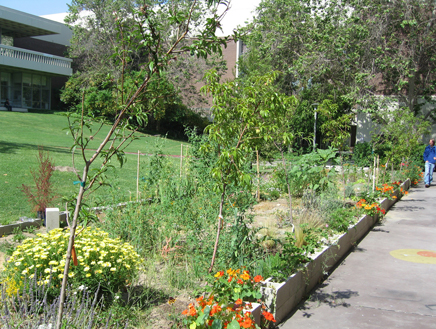
Can you imagine a small scale project like Edible Estates adding up in such a way that it is transferred to the public sphere, or grows in scale to such an extent that it impacts our industrial agricultural system?
Well, one real limitation of the project is it is based on an enormous amount of work for any family that has it. So any discussion of the reality of the project stops right there. I think most families in America aren't prepared to spend the time necessary to grow their own food in their front yard. I mean, a certain number will be - maybe they'll have to - if we come to some sort of crisis. Who knows?
Edible Estates is a very particular project focused on the American front lawn - I think everything is embodied in that. The whole project is based on this shift in the use of one very particular sort of land. That's all it's about. As soon as it moves from that context it becomes a very different project. It's kind of like the Victory Gardens from World War I and World War II in that way.
But I was thinking another possibility - what if we turned over entire suburban streets to migrant farm workers who would remove all the lawns on one street and all the families would agree to it - and it would be, the Eggplant Street. You know? You'd have this really diverse series of crops in all these front yards and the farmers would tend them, grow them, and all the families would get free produce, and the farmers would be employed, and they could sell food too because you'd grow more food than the families could eat by far - so, yeah, it could potentially.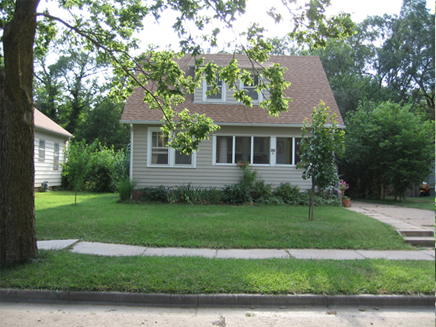


Did you intend to address food security or to demonstrate the possibilities of urban agriculture through Edible Estates?
Yes, I think it's really interesting what happens when you graft agriculture onto a city. The more you keep people in touch with the byproducts of their daily lives, the more you see it's connected.
We used to have cities that sucked resources from a 20 mile radius around them - so you ended up with a poor working class ring around a city where all the trash went and where you got all the raw materials. So there was this pocket of prosperity within a bubble of blight, really - and now we don't see that anymore because it's global. All the resources we're sucking and all the shit we're putting out is happening at a global scale, so you don't get that immediate relationship, even in terms of agriculture.
The collaborative nature of your work suggests you value public social life, but Edible Estates is based on private space --
Sizing up the reality of the world we live in - particularly in moving to LA from New York -- you realize immediately that LA is a city of private space. This is where it all happens. This is not a city of public space. I am interested in asking, "What are the possibilities of private space?"� instead of being in denial of the nature of the urban environment. If people are feeling like they don't really have control over the direction that things are going or the spaces that are being made for them, one thing we have in a capitalist society is our private space. We can make meaningful decisions about how we're going to use it.
These are private spaces with more responsibility than we've had in the past. There's a current obsession with creating private space as a refuge to escape from the disaster that's outside your door. And I think that's really problematic. I have such a lack of faith in our leadership right now that I have no expectations of the federal government or corporate America to make any real change in what's happening in our world. There was a time in the 60s when we had IBM and Kodak and companies working with Buckminster Fuller and the Eames and Andy Warhol - there was a time when there was some conversation at those levels, but I think it's totally disappeared. So I think a smaller, nimbler, quicker more effective way to do it is making small strategic projects, like I said, in private space in particular.
The LA River restoration is a mega-project that is getting underway. Given your preferences for smaller interventions, could you talk about the potential of that project?
What's the model of an appropriate public green space in LA? I don't think it's a Central Park. It should be a lot of little parks that everyone in the city can walk to. If you made a small pocket park so that every single inhabitant in LA could walk 10 minutes to the park - those parks would pay for themselves based on revenues from taxes on the increased property values of the houses directly adjacent to the park. Financially it would make sense.
That is what Edible Estates is growing out of: it's based on very small scale interventions that are very accessible to everyone in a small area. I think LA, like most cities in the world, needs to move away from these monumental tendencies that we have and think more about the power of small acts that when added up have even more effect than the monumental gesture. I think that's somewhat what the river could do. It's this long thin line that would affect every community it passes through.
It seems that LA has fundamentally a suburban structure, but with a population and creative energy that enables it to experiment with the suburban structure like you would never see in Fort Wayne. That's really exciting to think about - do you regard what you're doing as an experiment of that kind, in the suburban structure? Is that why you moved to LA?
I think LA really represents the world that we live in today. And I think New York doesn't. I think if you're practicing in New York you're profoundly out of touch with the way the world is going in relationship to the natural landscape, in relationship to everything. In LA, you have your nose pushed right up in it"�everything that's going wrong. If you're a problem-solver and a designer or someone who cares about the way we live and the direction the world is heading, I think it's healthy to be in a place like LA.
When you think about, "Where should I live?"� you have to ask yourself: "Do I go where I am comfortable and happy?"� You know? Or, "Do I go where I am needed, where there are problems to solve? Where am I going to be inspired, even if not particularly comfortable?" You know, there's so much about LA that makes me so depressed. It upsets me in such a deep way, but I just channel that into my work and that's what feeds it. I don't know how long I'll be able to do that. There's a lot of things I love about it, but if I wanted a pleasurable life of leisure I wouldn't be there. You're there because you want to make a difference and deal with reality, whatever that means.
What about doing work someplace really difficult: low-density, with all the suburban issues but in a place less supportive of creativity?
I'd like to bring it to the middle of the country. Take it to Salina, Kansas and propose a project for a family there. Or even go to Lakewood, you know?
There are two totally different ways of dealing with the world. One grows out of really creating a community of like minds who inspire you and who reinforce your own sense of what it is you want to do with your work. And then you use the momentum from that to go out into the world and extend yourself beyond your comfort zone.
Edible Estates seems to be less about generating a revolution and more about making a statement. Do you look at Edible Estates as a success because it made a statement, as a kind of an art piece? Or is the success of it measured by whether or not it reproduces itself and starts to generate real change?
The project sits so squarely between different disciplines that it's impossible to really evaluate. It just started as this one-off little idea and then it had its own momentum, and I just got out of the way and gave it what it needed to keep going. So, it's had a life way beyond what I expected it would have.
You know, if you look at the way different animals reproduce, you could make some connections between that and how some designers produce their work. Some put all their energy into one mammal baby, and their whole career is based on that one project, that one idea. I think I'm kind of the opposite. I'm this coral reef that keeps spewing out all this things and every once in a while one of them catches and develops. I don't base my whole ego or my practice on any one idea. Any one of them could fail and that would be perfectly fine.
So in the case of Edible Estates, I never had a desperate stake in whether it would fail in any terms. It has kind of really surprised me the response it's gotten, I'd have to say.
So, given the spectrums of architectural practice you've mentioned, and the variety of your work, can you put your work into context of things going on in architecture?
In terms of architecture today, there are few people I get really excited about. Ant Farm , Gordon Matta Clark, Buckminster Fuller, and Alvar Aalto. Ant Farm came out of conventional architecture and then went on to do these happenings and to create these sorts of ephemeral architecture spaces that they transported across the country. Gordon Matta Clark had Food -- a restaurant -- as artwork. He had performances there, and that's where everyone ate in Soho before it was gentrified. But so much of Matta Clark's work is also about removal. Is it possible to have an architecture of removal? Aalto's Villa Mairea combines high modernist principles with really local building techniques. The house is so eccentric -- and just so human.
Do you think that any of your projects explore that particularly?
There's the house on the hill that is just finishing up in Silver Lake. There's been no square footage added. It's an old Spanish house, and I wanted to keep it there: intact, buried in the middle, but have it morph into something else on the outside. You can't tell where the old house ends and the new house begins. You can't tell what was done to it or what was done before. But everything that's been done to it has been done in response to the climate and the landscape -- and also to the people living there. On the one hand it has very dramatic formal qualities, but, at the same time, I think there's a certain modesty and quietness to it.
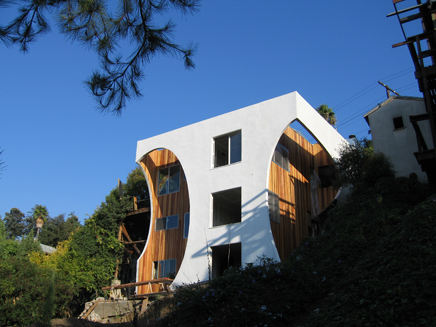
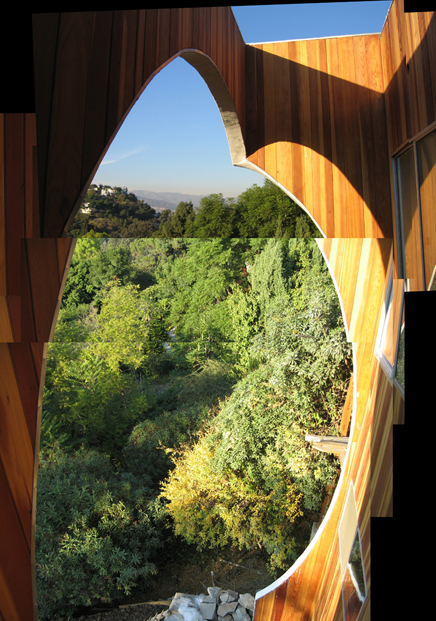
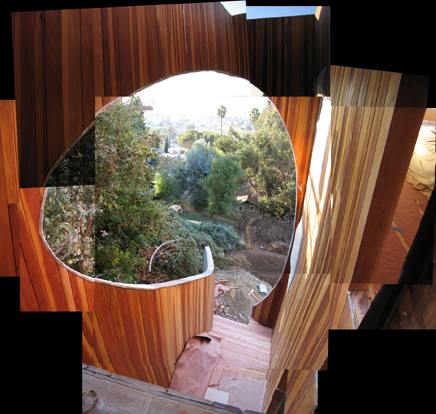
It's very playful.
Well, I also call that my "gay house" -- that house was made for a gay couple in Silver Lake. What does a "gay house" look like? If we're going to think about the role of the gay family in society, then we should have an architecture that represents it and weaves it into the landscape of a street of other sorts of families. There's this very minimal white box that's being carved up and violated, so that what's inside is much more effusive, a reckless environment with color and warmth. In that house every room is a different bright color, so each one is a different chromatic world, and as you carve further and further into the house it gets more colorful. The bedroom is going to be muted, but whenever you open any medicine cabinet or closet, all the interiors will be bright purple, in contrast to this kind of gray. There are constantly these shells being peeled back.
When you're designing things, you have to ask: to what extent are you designing prototypical things, like, "�everyone should live like this"�, and to what extent are you designing very specific responses to very unique conditions of particular people in particular places. I'm interested in doing both. I love the extremes. But it can be problematic to design so specifically for one location and one person"� without thinking about the architecture for the next person.
Are you interested in finding some kind of hybrid between mass production and customization and sustainability?
I'm not doing big enough architecture projects yet to really solve those kinds of problems or really think about them. All my projects are so small. I do events, gardens, and small buildings. I'm solving very little problems in really different ways.
It's really important for one part of my practice to take on really serious social and ecological issues, but it's also important to have another part that can be about pure joy and pleasure of making beautiful things - without feeling guilty about that. Practices that only deal with ecological issues or social issues are very easy to compartmentalize and dismiss. But if you have a broad practice that is also about other things, then your audience cross-pollinates. The people who were interested in me because I was doing the Salons are suddenly interested in the gardens, and the garden is suddenly legitimized because it's a part of an art practice, and the art practice is legitimized by the architecture, so there's a kind of crop rotation. Whenever I do anything, I immediately call it a project - I don't put it out to the side. It's always folded right into the center, whatever it is. With each project, you size up: What's the territory here? What are the parameters and the issues, and where is the overlap between this project and the global issues that I'm interested in?
In the case of Silver Lake, it was the social issue of this gay couple - and with Edible Estates it's how we use the front lawn. With the Sundown Salon projects, it's how we interact socially together. And in January, I'm holding a day of dance workshops and classes in the Whitney Museum - in their space on Park Avenue, the Altria lobby. I'm interested in taking something totally benevolent and pure and honest and base, like dance, and put it in a place where it is totally unwelcome, like a corporate lobby in midtown Manhattan.
I really love that notion of taking these pure beautiful things of life like gardens and plants and dance and movement - these things that architects supposedly try to accommodate in their work, but usually are quite hostile towards, and then forcing them into these locations where contemporary society is uncomfortable with them.
So you are trying to create tension with the public?
Putting benevolent things in a place, an unlikely place, where they become threatening -- it forces you to check yourself and ask, "Why am I feeling threatened by this vegetable garden?" I think it's the same thing with this dance event - it's taking something that is one of the most beautiful kind of basic forms of human expression and so nonthreatening and so basic and peaceful -- and putting it in this space that is potentially threatening to some people, the idea of people moving around, really in touch with their bodies in a space where everyone is marching in their suits!
With Edible Estates I didn't really have to deal with any conflict directly, and neither did the homeowners. We only found out when the New York Times reporter asked the neighbors what they thought. She knocked on all the doors and asked, "What do you think of that garden?"�
It's not the goal of the work to cause conflict or strife.
Architecture as you practice it means more about seeing where need is and responding with the skills you've developed, in terms of organization and networking and coordination.
Exactly. I think part of it was moving into my house, and entering the world of Buckminster Fuller . He never defined himself professionally in terms of any kind of discipline. And his career was based on not being hired to do anything. Architects today sit around and wait for people to hire them to solve problems instead of being more actively engaged in the world around them and saying, "Here are the problems that I'm going to solve, and if it is important enough someone will support it."� I want to see students learning to do that. Not waiting for a paycheck or waiting to be hired, but actively going out and hiring themselves for projects. If you look at the history of Buckminster Fuller, up until when he was in his early 30's his practice was based on that very principle, not being bound by any profession. He would identify problems, and if he thought they were important enough he would just put them out there, not even with the need that they would happen right away,
How do you fund a practice like that?
I don't know. I just work a lot and I don't sleep very much. I just do what I do and I hope that it evens out in the end. I don't get paid for most of my work, but the things I do get paid for tend to cover the rest.
But whenever I object to anything that is prevalent in the profession, I'm looking for a whole spectrum of alternatives and not just one path to practicing. So I don't think what I am talking about precludes being hired by someone to solve a problem. There's always part of my practice that is having people hire me to be the designer, and I don't have a problem with that. I want to supplement that by having a parallel practice that is going out and seeking problems for which there is no client.
How is the Schoolhouse going?
It's been wonderful. We have nine students, and meet one day a week for twelve hours. By setting aside that time you free yourself from obligation to the work that has a deadline of some kind, you can free your mind to see where it would naturally be inclined to go. You know you're striking out an entire day for 12 weeks. There's nothing you can do before or after - you can't rush out to something else you're going to be late for, or be late because you're coming from something else. That whole day is ours. It's sacred and everyone who was accepted into the Schoolhouse had to agree that they were going to be there every single class, the whole day.
The students are all coming from different places and going toward different places, so we don't really talk so much about the way things manifest in our respective disciplines, we just talk about ideas. And the students have bonded -- we take turns going to the farmers market and making lunch every week. And breakfast. Our conversations kind of organically move from the dome in the classroom, to lunch, to something nonverbal (dance, movement, yoga); it's all kind of connected.
We have 24 teachers coming through. This week, it was Claude Willey and Deena Capparelli - who have this collective called Moisture . They're creating moisture gardens in the Mojave Desert, and reintroducing native species. They also teach urban planning and design. They took the class on mass transit around the entire city to the outer reaches, for a talk about the migration of people and plants. And then, Mark and Robby Herbst from the Journal of Aesthetics and Protest . And Martha Werthiem from the Institute for Figuring . Some teachers come for 2 hours one day, some stay all day.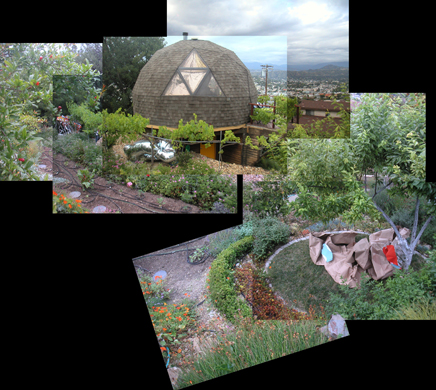
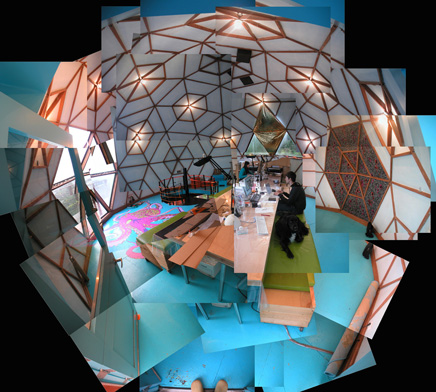
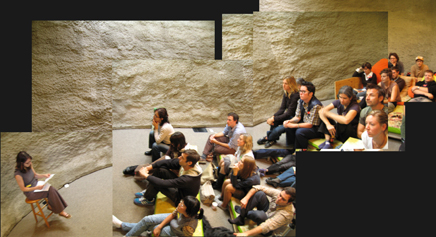

.jpg)
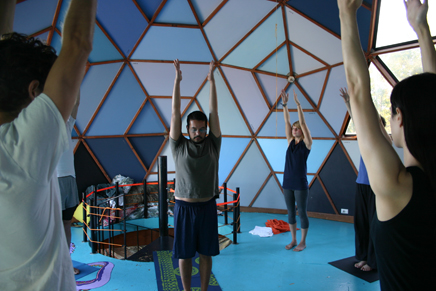
Are you trying to be a model for design school, or is it for generating ideas, or education?
It's an educational environment. The Schoolhouse is really about being much more responsive to places and people in our work, so all the visiting teachers are deeply engaged in geography, place, and people - and they all practice collaboratively and socially. Everyone really wanted to get out of the isolation of studio and to reconnect with the world outside of ourselves. So much of the practice of a writer or designer or artist is insular, introverted: either within your own studio or within your discipline. The Schoolhouse turns our attention outward.
The theme this year is "Tobeapart."� How do we reconcile our needs and desires to be both part of something bigger, but also an individual with autonomy? In some ways that's what the whole Schoolhouse is about.
What's on the horizon?
Well, there's the capitalist commune. My friend Yoshua Okon and I put together this proposal to start a capitalist commune in Mexico. The initial step is a think tank in the summer where experts in all these disciplines involved in how we occupy the planet can weigh in and lecture on the most current research on food production, energy production, waste management. It would be based on land ownership - everyone on the commune would have their own piece of land. The capitalist commune would be a way for us to gain momentum by feeding off each other and really living a life that feels less toxic and less dependent on the system. It's not about creating a comfortable cocoon or bubble from the world. It's more about creating a laboratory or space where things that are created / developed there can be shared as we travel out into the world to do our work. It could also be a site for the schoolhouse. It's a long-term project but it's something we're really excited about.
Another project is Car Free City, which traces through to the logical conclusion what would happen if you eliminated every car from the city. What would you then do with all the space that was left over? The freeways become parkways. What do the garages become? How do you reprogram an entire city when all the cars are gone?
I'm trying to expand the idea of what architecture is. I guess I just want people to take ways of making spaces in the world seriously that aren't just big buildings, big monumental one-off buildings. Younger architects and students need to see that small gestures can have big impacts in the way we live. We don't need offices of 100 people to produce $200 million projects to have an impact. The bigger the office, the more you have to subsidize it by doing work you don't believe in. We need to practice in a number of ways, but I prefer the nimbleness of being small.
Creative Commons License
This work is licensed under a Creative Commons License .
/Creative Commons License
2 Comments
fritz rocks!!
Holy crap! I know the guy with the peace sign on his shirt (that house is down the street from my Grandmother and Aunts house) and I know the guy in the orange t-shirt too! Salina to LA, but I don't know this Fritz cat.
Block this user
Are you sure you want to block this user and hide all related comments throughout the site?
Archinect
This is your first comment on Archinect. Your comment will be visible once approved.